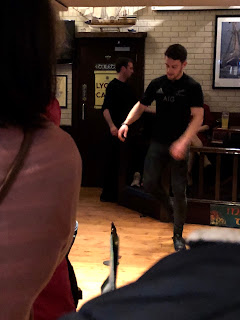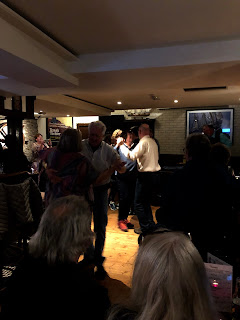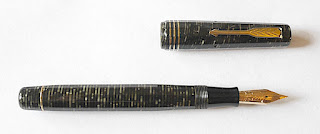The Dingle Peninsula
We spent Friday May 4 on the Slea Head Drive on the Dingle Peninsula. The drive covers about 47 kilometers. It is said that a fit person can walk it in a week; we took about six hours to drive it. As you can see the scenery is spectacular, and it is dotted with sites both amusing and immensely moving.
Our first stop was purely Sharon’s idea, the Celtic and Prehistoric Museum. It looked to me like an omnium gatherum of a tourist trappy sort. And in a way that is exactly what it is. It was assembled by Harry Moore a San Francisco musician with a fine eye and an excellent collector’s sense. It was definitely worth a brief visit.
Our next stop was altogether different. No one can visit this country without being aware of the great famine of the 1840s when Ireland’s population was reduced by about one-fourth. Tenant farmers who could not pay their rent were thrown off the land and to survive they built cottages wherever they coud, and often starved to death there. The site was intensely interpreted and most moving.
 |
| This is a beehive house. Luke Skywalker lives in one. |
Our next site Dunbeg Fort was not there, during last winter’s storms part of it had fallen off the cliff into the ocean.
Cashell Murphy, created around 500 BCE was still there, a settlement of five stone age families. I find these settlements, usually on hilltops to protect from enemies, really evocative. I first saw one in Wales more than 45 years ago and it has always remained with me. This one gave me the same sense of wonder at this early European civilization.
Blaskett Island is the story of yet another culture. Isolated from the main island that is Ireland the folks here held onto a pure form of Irish culture and around the turn of the twentieth century became a vital part of the Gaelic revival. To fully understand the culture, you need to go out to the islands for a half day. Lacking that, the Blaskett Island Centre gives you a fine understanding of what this tiny colony (at its peak numbering 180 people) gave the nation and its culture.
 |
| On exhibit at the Blaskett Centre, boats used to get to and from the island |
Gallarus Oratory is a remarkable stone structure dating from about 700 CE and was a place of worship for early Christians, a religion so different from what would emerge even 300 years later after the arrival of the Normans.
By the time we finished there it was late afternoon and time for us to head back to Dingle where we had dinner reservations at the Global Village Restaurant. After a brief consultation with our server and the owner-chef we settled on the tasting menu. It was our best meal thus far but (spoiler alert) it would hold that distinction for less than 24 hours.
We hit Dingle at the May Bank Holiday and during a local music festival. There was music everywhere in the town, after going into one other place, we settled at Nelligan’s Pub. What was going on there was a genuine Irish House party. These are events where people, both professional entertainers and not, gather to sing, dance, tell stories. We had seen one staged in Dublin nine years earlier ut this was more authentic. The dancing was real, free of the taint of Riverdance, and the highlight of the evening was when someone in the audience called on Kathy, who described herself as someone who sings on busses, to offer a song. We were there for barely an hour and I had the feeling that by the time we left the main events all along Green and High and Main Streets were just starting. But we’re old and Ma was fading.
 |
| I just liked this painting |
 |
| Kathy who sings on busses |
It was, all in all, a remarkable day. Possibly the climax of our trip. Saturday we would travel to another quaint Irish town, Adare, where we would be overnight on our way to Doolin where we will stay at Ballinalacken Castle and see the Cliffs of Moher.






















Comments